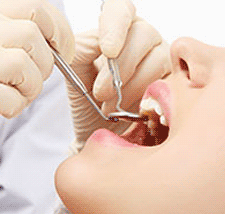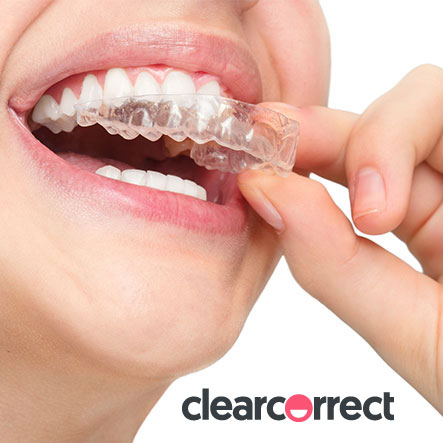→ GENERAL DENTISTRY
→ PEDIATRIC DENTISTRY
→ IMPLANT DENTISTRY
→ ORAL SURGERY
 General Dentistry
General Dentistry
We at Daniel Family Dentistry in Seymour, TN offer comprehensive dentistry for the whole family. We recognize that all of our patients are unique and deserve to receive dental care that reflects their individual needs. We have an experienced and talented team who are committed to working with you and your family to create a comfortable, stress-free, and rewarding dental experience every time you visit our practice.
What should I expect during a dental exam?
The secret to a bright, healthy smile is actually no secret at all: brush, floss and get a professional dental exam at least once every six months. Professional dental exams are all about prevention – preventing existing problems from getting worse and preventing dental problems from developing in the future. Regular dental exams make it possible to identify and treat a problem in its earliest stage – which is not only good for your oral health but also good for your budget! There's nothing to fear with a dental exam. Your teeth will be visually examined for signs of plaque, tartar and tooth decay. Your gums will also be examined for puffiness or discoloration, which are signs of gum disease. A full set of dental X-rays may also be taken during your dental exam, to enable your dentist to see below the surfaces of your teeth. Dental exams typically end with a dental cleaning, to remove surface stains and buildup.
What are dental X-rays?
Dental X-rays have come a long way. Todays dental X-rays are safer, faster, more comfortable and more informative than the X-rays of years past. Digital X-rays, one of the latest and most advanced dental technologies, produce high-quality images of your teeth that can be viewed instantly by you and your dentist on a LCD monitor. Digital X-rays reduce radiation by up to 90% and provide exceptional diagnostic information to ensure that potential problems are caught in their earliest stages. Intraoral photography is another alternative to traditional dental X-rays. With intraoral photography, problems such as cavities, fractures and discolorations in the teeth are captured through clear and sharp photographic images that are taken with a 35mm or digital camera.
What should I expect during my dental cleaning?
No matter how often you brush and floss, plaque and tartar deposits can still build up on your teeth. A professional teeth cleaning is the single most effective way to remove these deposits and prevent them from causing more serious problems in the future. While a traditional teeth cleaning involves manually scraping away these deposits with special dental tools, advances in dental technologies now give you more options for teeth cleanings.
Many patients find ultrasonic cleanings more comfortable with an ultrasonic scaler (rather than a manual scaler). It is used to remove deposits, kill harmful microbes and eliminate bacteria around the teeth and gums through high-frequency sound waves. Many patients find ultrasonic teeth cleanings more comfortable than traditional teeth cleanings because they are quicker, quieter and pain-free.
A deep cleaning may be recommended if excessive plaque and tartar deposits have developed below the gum line. Deep cleanings, also known as scaling and root planing, involve a two-part process: first, the stubborn deposits are removed, and then the root surfaces are smoothened. A deep cleaning helps prevent periodontal disease and restores gum tissues to a healthy state.
Why does my dentist perform an oral cancer screening exam?
Oral cancer affects nearly 35,000 Americans every year. The keys to surviving oral cancer are early detection and early treatment. This starts with a regular oral cancer screening – at least once every six months. An oral cancer screening takes just minutes, is pain-free and can be performed during regular dental exams. If you are male, a regular oral cancer screening is especially critical: Oral cancer is more than twice as common in men as it is in women. Other people at high risk of oral cancer include people over the age of 60, tobacco smokers and heavy drinkers.
What are white fillings?
If your silver fillings make you feel self conscious when you smile, or it's simply time to replace them, consider white fillings. White fillings are just as durable as they are attractive! Made of composite resin, white fillings match the natural color of your teeth and are an excellent option for small to mid-sized cavities. White fillings are strong, stain-resistant and require less removal of your tooth structure than amalgam fillings.
What are dental crowns?
A dental crown is a tooth-shaped "cap" that is placed over a tooth -- to cover the tooth to restore its shape and size, strength, and improve its appearance. The crowns, when cemented into place, fully encase the entire visible portion of a tooth that lies at and above the gum line.
With recent advancements in dental materials, crowns are more esthetic and stronger than ever. Ask Dr. Patrick or Dr. Heidi about the different types of dental crowns they offer!
What are dental bridges?
Today, dental bridges are still considered one of the most durable, conservative and cost-effective options for bridging the gap between a missing tooth and surrounding teeth. Comprised of two anchoring teeth and a replacement tooth, dental bridges help prevent surrounding teeth from drifting out of position, improve chewing and speaking, and help keep your natural face shape in tact.
At Daniel Family Dentistry, we have two different treatments to replace missing teeth:
1) traditional dental bridge
2) dental implants
Dental bridges can take 2-3 weeks to make and with proper hygiene and regular dental care can last many years. Dental implants can be placed by Dr. Patrick and do not affect the adjacent teeth. Once the implant is in place and the proper amount of time has elapsed, Drs. Patrick and Heidi make the crown that goes on top of the implant. Implants are an excellent option to replace missing teeth and can last a lifetime.
What are dentures?
Using dentures to replace missing teeth is not only great for your oral health; it's a great way to look and feel younger! Today, there are a variety of natural-looking and comfortable dentures for patients who need to replace missing teeth. Made of a gum-colored plastic resin or acrylic base and either resin or porcelain replacement teeth, dentures are custom designed to fit your mouth. If you have several teeth or all teeth missing on the upper or lower jaw, full dentures may be your best option. Partial dentures, which can be either fixed or removable, are great for patients who have several missing teeth scattered along the upper or lower jaw. Drs. Patrick and Heidi can also discuss implant supported options for your dentures.
Just as with your natural teeth, dentures require daily maintenance. With regular wear and tear, your dentures can last 5-7 years. During that time, you may need periodic denture relines to accommodate changes in the contours of your mouth. Regular denture relines involve resurfacing the base to ensure that your dentures fit and function perfectly. If you break your dentures, it's critical to bring them to your dentist for professional denture repair. Home denture repair kits can cause more damage and be even more costly to fix.
What is gum disease and how is it treated?
Red, swollen gums are a red flag for one thing: gum disease. If you have the symptoms, you're not alone. More than 80% of adults have some form of gum disease. Fortunately, there are many effective and pain-free gum disease treatments. For gingivitis, the mildest form of gum disease, treatment typically involves a thorough dental cleaning, followed by daily brushing and flossing. Advanced gum disease, also known as periodontal disease, requires scaling and root planing to remove stubborn deposits below the gum line. Laser gum surgery, a new alternative to scaling and root planing, uses beams of high-speed light to remove plaque and tartar buildup. If non-surgical methods of gum disease treatment are ineffective, a gingivectomy, or periodontal surgery, may be necessary.
What are root canals?
Root canals are needed when either decay or an injury infects the inner tooth (the pulp). In the earliest stages of infection, you may not feel any pain at all. But when it progresses, you could have a toothache and swelling, or a dental abscess might form. Root canals remove the infection and prevent it from spreading. Pulp capping is an alternative to root canals that are used when the infection has yet to penetrate the pulp. Pulp capping can also prevent a large dental filling from getting too close to the nerve.
What sedation options do I have?
In our office, we put patient comfort at the top of our priority list. We offer nitrous oxide (laughing gas) for patients who have dental anxiety. For greater dental phobias, we also offer oral conscious sedation.
What are ClearCorrect™ aligners?
Dr. Heidi offers ClearCorrect orthodontic aligners for her adult patients as an alternative to traditional braces. ClearCorrect is a brand name of an orthodontic retainer system used to correct the alignment of teeth. Traditional braces are typically worn for an average of one to two years, but with the emergence of advanced orthodontic treatments like ClearCorrect, that treatment time has been cut to anywhere from eight to 14 months. When cared for properly, ClearCorrect aligners are nearly invisible for the length of treatment.
- ClearCorrect makes straightening teeth easy. Unlike traditional braces, ClearCorrect relies on custom-made removable aligners to straighten your teeth. During your ClearCorrect treatment, you wear each of your custom-made, plastic aligners for at least 22 hours each day, removing them to eat, drink, and clean your teeth.
- ClearCorrect is comfortable. ClearCorrect plastic aligners make teeth straightening comfortable by applying gentle and gradual pressure on your teeth. ClearCorrect adjusts the teeth in subtle increments. Based on your treatment plan, you will receive a new aligner about every 2 to 4 weeks. Plus, their advanced design ensures a comfortable fit in your mouth without the irritation of metal braces and brackets.
- ClearCorrect is barely noticeable. One of the advantages of ClearCorrect invisible teeth straightening is its barely noticeable design. And because ClearCorrect uses the highest quality plastic and the most advanced manufacturing techniques, their aligners have few visible marks, especially when compared to other invisible braces systems.
- ClearCorrect is better for your oral hygiene than braces. The metal brackets and wires used with traditional braces make cleaning your teeth properly virtually impossible. With ClearCorrect, you remove your clear aligner trays not only to eat and drink but also to brush and floss your teeth. You should rinse your mouth or brush your teeth before putting your aligners in, so ClearCorrect aligners can actually help you take better care of your teeth.
- ClearCorrect aligners are made in America. The ClearCorrect invisible braces system is available for men, women, and teenagers all over the world. But no matter where the clear plastic aligners are going, they’re all made at the ClearCorrect headquarters in Round Rock, Texas.
To see if ClearCorrect invisible aligners are the right tool for improving your smile, contact Daniel Family Dentistry for a free consultation.
Schedule an Appointment


